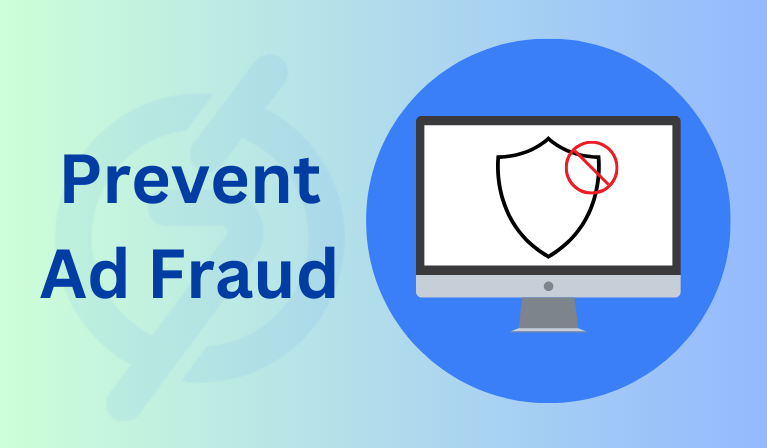This Just In: A growing number of ad frauds and cyber crimes has left the whole digital advertising industry in a state of shock.
According to projections by the Statista Research Department, North America is said to suffer the highest economic losses because of online advertising fraud in 2028. It is set to account for 42% of the 173 billion US Dollars in ad fraud losses forecast for that year, followed by Far East & China with 20% and Western Europe with 17%. If you don’t take action now, your ads could be the next victim.
But don’t panic just yet. Your ads might be a bit vulnerable now, but they don’t have to be. With the right detection strategies and defense mechanisms, you’re all set to tackle any fraud coming your way. This blog dives into exactly what ad fraud is, how it works, and how you can defend your ads.
Ad Frauds: A Rising Threat
Ad fraud is costing advertisers billions worldwide. But what is it all about?
Ad fraud refers to the malicious activity of creating deceptive ads that harm the user clicking on them. For advertisers, this can mean anything that harms either the perception, the outcome, or the performance of the ad. It usually affects advertisers, publishers, and users who are less digitally savvy by posing as an invisible threat.
It can be done for a lot of reasons.
- Scammers and fraudsters might create ads that redirect users to a completely different page to steal their personal information.
- Publishers might scam advertisers by providing fake impressions and profiting off of it.
- Even your competitors might create false advertisements that tarnish your image or use click spam to exhaust your budget.
While it is done for plenty of reasons, there’s one common motive: financial gain.
Why Advertisers Should Care
So the question is, why should you, as an advertiser, care? You’re not getting affected yet… or are you? Many times, you won’t even realize that you are.
Your ads might be getting clicks by bots instead of real users, or the targeting by the ad network might be totally off. You’ll keep changing your strategy, thinking there’s something wrong with it, when the actual problem is completely different.
Ad fraud can come in the form of fake impressions, fake clicks, and fake audiences. Unjustified ad placements are also very rampant and often lead to the advertisers feeling unsatisfied with their results. These inaccurate results lead to poor future planning and budget drain.
As an advertiser, you should definitely care about who your ad is getting displayed to, whether the clicks are legit, and if you are getting a decent amount of return from them. If your engagement or ROI feels off, then make sure you do a thorough analysis to check if you are getting scammed.
Ad Fraud Can Affect Your Brand
While financial losses because of ad fraud are a big deal on their own, it doesn’t end there. It negatively impacts your brand in a variety of aspects, and here’s to list a few.
- Sinks your Reputation: When consumers start seeing your ads on low-grade and inappropriate sites, it will put your brand in a negative light. They will trust your brand less and less, ultimately sinking your reputation.
- Decreases your ROI: Very often, ad frauds lead to lower ROIs. Outcomes are poor, and you don’t get the expected worth of your investment.
- Inaccurate Data: When your clicks and impressions are all falsified, there’s no way to know what the accurate insights are. They could either be less than what is shown or even more in certain cases.
- Poor Future Planning: Reviewing inaccurate data will automatically result in poor planning for future campaigns. You might focus on the wrong things instead of the ones that require vital changes.
And the list just goes on if you don’t tackle it in time.
How Ad Fraud Works: Watch Out For These
There’s no one way in which scammers conduct ad fraud. Some might be using tactics that we haven’t even identified yet, but here’s a list of the ones that are most commonly used.
Click Fraud/Bot Fraud
Click fraud is a type of fraud that is carried out by bots and works by generating fake clicks for the ad. Advertisers are made to believe that they are interacting with real human users, but instead, it’s just the ad fraud bots trying to deceive them. This fraud is usually seen with PPC or pay-per-click ads and results in advertisers exhausting their budget way too soon.
Click Spamming
Click spam is another form of PPC fraud that specifically targets website and mobile ads. Here, spammers execute clicks on behalf of users who haven’t made them. They begin clicking in the background while the user engages with the website or app, making it look as if they have interacted with the ad itself.
Impression Fraud
Impression fraud happens when scammers (usually publishers in this case) defraud advertisers and ad networks running CPM ad campaigns. They rack up impressions by using bot traffic and making the ads appear in unseen places to make more money. By creating a false perception that ads are getting seen, they increase their ad revenue.

Ad Stacking
In this type of programmatic ad fraud, ads are hidden by publishers from the actual users. They are layered on top of the other, creating a stack with a primary ad on the top. When this primary ad gets an impression or an interaction, it is counted for all the ads stacked up. This is also done for the purpose of increasing ad revenue.
Pixel Stuffing
When multiple are crammed up in a single 1×1 pixel space that makes them invisible to the user, it is termed pixel stuffing. In other words, normal-looking pixels are combined with fraudulent pixels to hide them from the end-users. Impressions and clicks are counted as usual, holding absolutely no value for the user.
Ad Injection
Ad injections are a type of fraud where ads are ‘injected’ or sneaked into places on publishers’ websites where they don’t belong. It can either replace existing ads or add new ones during a user’s session. This not only interrupts the user’s experience by making them see irrelevant ads but also hides the actual ads that have been paid for.
Domain Spoofing
This involves hiding the real domain or identity of a website. Spammers ‘spoof’ or copy the domain of another well-known website by making certain alterations to imitate them.
When advertisers spend money to bid and display their ads on such sites, they are setting themselves up for loss. Although users and impressions from it are real, such low-quality websites are not worth the money spent on them.
Are Your Ads a Victim of Fraud?
Scammers and fraudsters are extremely subtle with their tactics. There’s no way you’ll know you’re being defrauded until you sit down to analyze and notice it specifically. Here’s what you can do.
First, check if you are at risk of advertising fraud. While fraud can generally impact any size and niche of businesses, there are a few that are at high risk. Generally, fraudsters are seen targeting finance businesses, retail/e-commerce stores, and firms offering legal services.
Next, notice the signs. These can be:
- Unusual or lower engagement rates compared to the number of impressions and clicks.
- Lower interactions than what you consider a ‘ base’ standard.
- Unrealistic spikes in impressions and CTR.
- Repeated site visits that lead to no actual engagement or conversion.
- Suspicious traffic sources that don’t really include your target market.
- Higher bounce rates can be a result of bot traffic.
If anything seems unusual, you can further turn to ad fraud detection tools to identify fraudulent activities in your digital advertising campaigns.
Pro Tip: Check for suspicious activities in your ad campaigns every once in a while, even when you don’t see the signs. This can help you identify and eliminate fraud in the early stages.
Prevent Ad Fraud With These Strategies
Advertising fraud can be easily mitigated with the right strategies. Here’s how you can safeguard your campaigns:

Monitor Performance Regularly
To grasp fraud, it’s best to monitor your performance regularly and watch out for any unusual activities in the preliminary stages. Set a ‘base’ standard for yourself depending on past performances, and use it to compare future performances. You can also make projections and compare them with the actual results.
Look out for the ad impressions, click-through rates, legitimacy of website traffic, conversions, and other relevant metrics. If anything looks abnormal or out-of-place to a vast extent, then it can be a sign of ad fraud.
Research Reputable Ad Networks
Your ad delivery largely depends on ad networks, which is why it’s important to partner up with only reliable ones. Research reputable ad networks and check for their:
- publishing partners
- website verification procedure
- quality of ad inventory
- transparency in results and reports
- support system
- reputation in the market
Ensure that they aren’t involved in any kind of fraud themselves before advertising through them.
Implement Multi-Layered Security
The next thing you can do is tighten up your security. Opt for multi-layered security measures like IP blacklisting, device fingerprinting, and behavior analysis that detect and block frauds effectively. It is a sophisticated defensive technique that you can use to safeguard your ads from a variety of frauds.
Monitor Your Competitors
Keep an eye out for what your competitors are up to. Many competitors don’t play fair and might employ bots, fake accounts, and fake referrals to give you a false impression. They might even hire low-paid workers to continuously click on your ads, called ‘click farms.’
So, if you suspect any such activities, block all suspicious IP addresses and consider legal action if the problem persists.
Watch Out For Spoofed Domains
To detect any spoofed domains, you can either use a tool or do searches on your own. Carefully examine your URL and pay close attention to any misspellings and alterations in characters.
For example:
- ‘amazom.com’ instead of ‘amazon.com’
- or using unusual characters like ‘rn’ for the letter m
You can also train your organization to do random checks.
Utilize Fraud Detection Tools and Software
If you see any unusual activity or are at a high risk of digital advertising scams, then utilizing fraud detection tools and services can be your best bet. Invest in tools and software that are accurate, reliable, and can analyze multiple facets of fraud. They should offer full transparency and be capable of providing full-funnel protection.
Target Precise Audiences
If you set your targeting to a very precise location or demographic, you can easily identify any spikes in impressions and clicks from unmentioned sources. This can be an indicator of fraudulent activities being conducted by publishers and ad networks.
Follow the Industry Initiatives
Initiatives and guidelines led by companies like IAB (Interactive Advertising Bureau) serve as a great marker for ad fraud. Becoming a part of them will give you access to a community that works to combat ad fraud and promote safe practices.
Conclusion
As new technology unfolds and online space becomes more crowded, we are bound to see a rise in the number of ad frauds. Scammers are going to come up with newer tactics that are yet to be discovered. But the good news is that ad fraud is not unbeatable. While there might not be a feasible method to tackle it from the root yet, prevention measures can go a long way.
The bottom line is- you always need to stay one step ahead, prioritize reliable partnerships, and take action against suspicious behavior in the early stages. Make sure your ads get the worth of your investment without any compromises.
Frequently Asked Questions (FAQs)
What is ad fraud?
Ans. Ad fraud refers to malicious activities that affect the perception, outcomes, and performance of digital advertisements. They can severely affect the ad campaigns and cause high losses to the advertisers.
How can I detect ad fraud?
Ans. Advertisers can detect ad fraud by using specific tools and continuously monitoring your campaign’s performance. You can set a base standard and compare it with the actual results to check for any suspicious spikes or falls in the number of impressions, clicks, and engagement.
What are the most common types of ad fraud?
Ans. Click fraud, click spamming, impressions fraud, ad stacking, domain spoofing, pixel stuffing, and ad injections are some of the most common types of ad fraud that you should watch out for.
How can advertisers prevent ad fraud?
Ans. Advertisers can prevent fraud by using tools and software that help in detecting and eliminating fraud throughout the funnel. You can also keep a constant check on your competitors, monitor your performance, watch out for spoofed domains, and implement a multi-layered security system to keep things in check.
Who is at the risk of ad fraud?
Ans. Ad fraud can impact businesses of any size and niche. However, it’s financial businesses, legal firms, and retail/e-commerce stores that are at high risk of ad fraud.


















